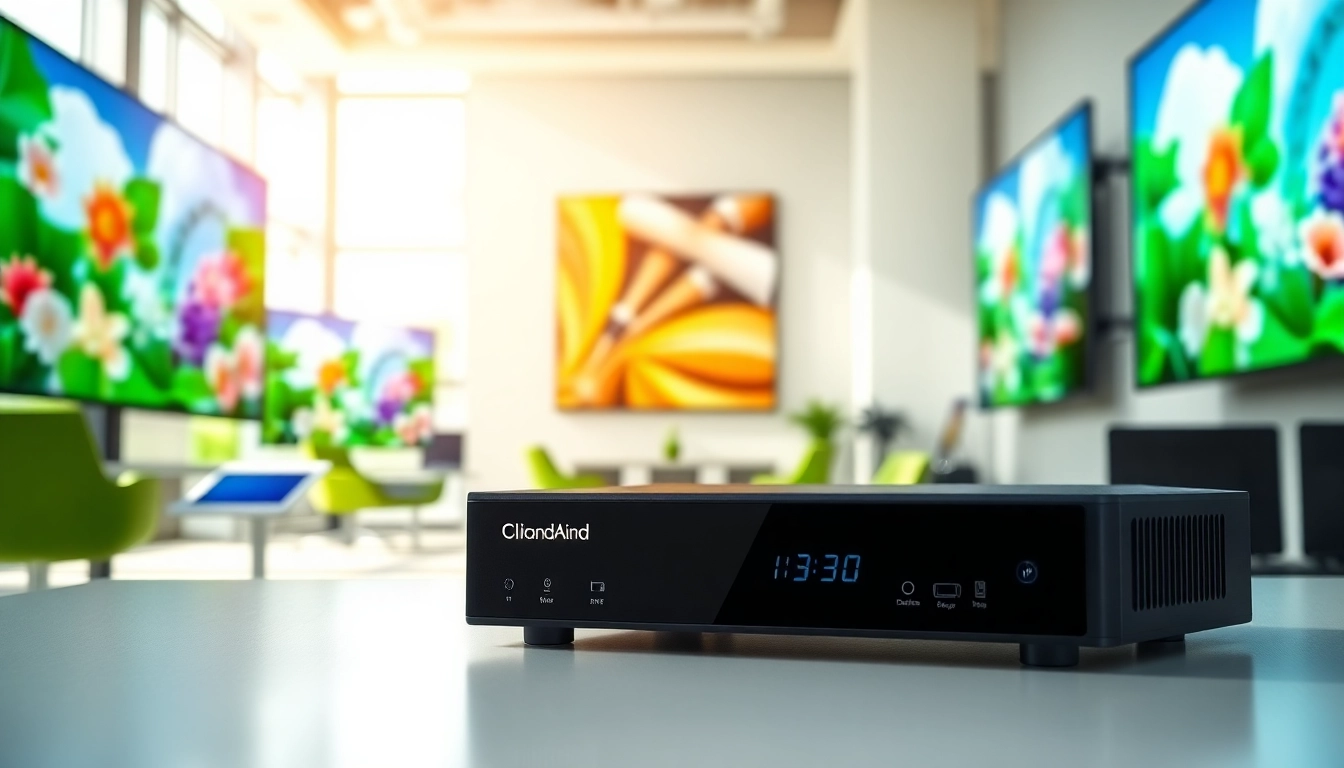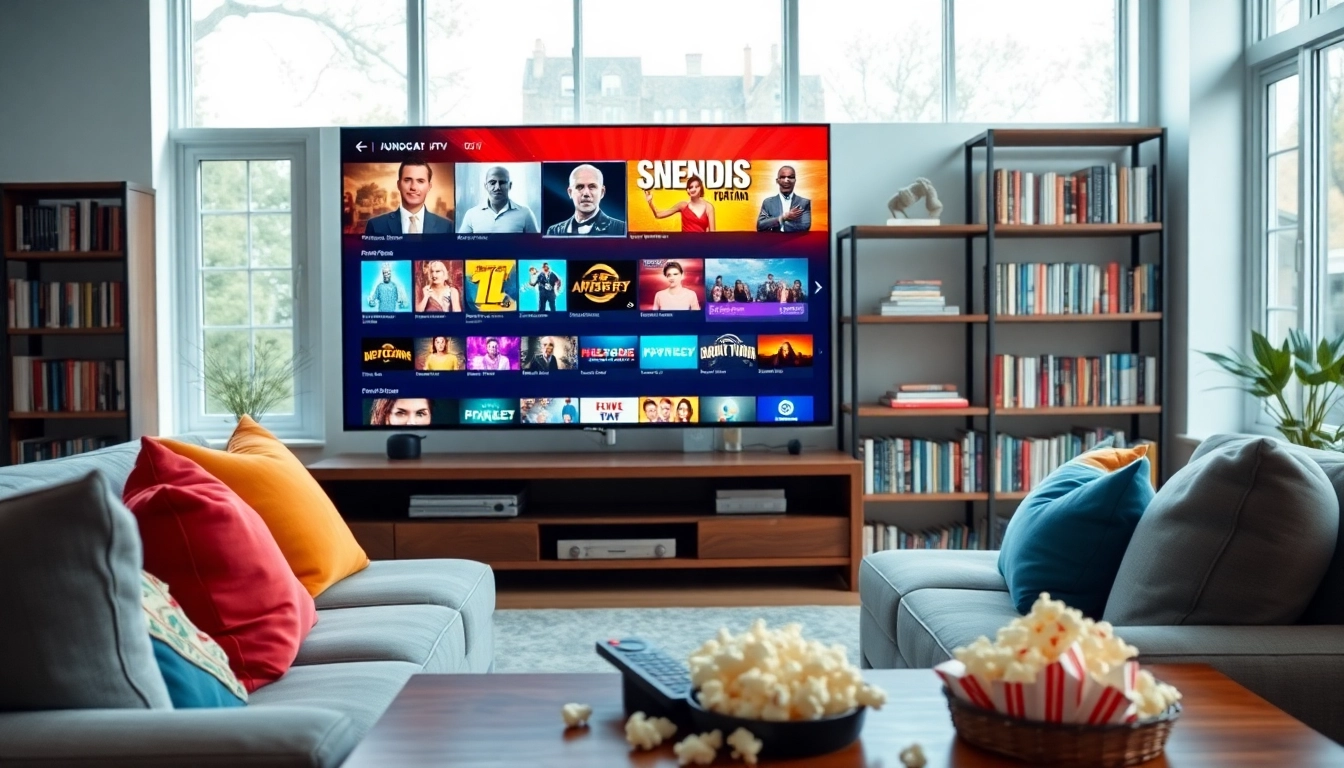Understanding the Android Digital Signage Player
What is an Android digital signage player?
An Android digital signage player is a device or software solution based on the Android operating system, designed specifically for managing and displaying digital signage content. These players can turn virtually any screen into a dynamic digital display, enabling businesses to showcase promotions, information, videos, and images in a visually engaging manner. The popularity of these players stems from their flexibility, affordability, and ease of setup, making them a preferred choice for businesses of all sizes.
How does an Android digital signage player work?
At its core, an Android digital signage player operates by receiving content from a cloud-based content management system (CMS) or local storage. The player connects to a display or TV, often through an HDMI interface, and runs a digital signage application that pulls designated media and schedules for playback. Content can be videos, images, or text, which can be updated in real-time or based on a predefined schedule. The Android environment allows versatility in content creation, where different apps can be utilized for specific needs, from video playback to interactive displays.
Benefits of using Android digital signage player
Using an Android digital signage player comes with numerous advantages:
- Cost-Effectiveness: Competitively priced, these players eliminate the need for expensive proprietary hardware.
- Ease of Use: Many Android digital signage solutions come with intuitive interfaces that allow non-technical users to create and manage content effectively.
- Flexible Content Management: Many create powerful CMS tools, enabling remote management and updates of content.
- Wide Compatibility: They can work with various display types, including flat-screen TVs, monitors, and interactive displays.
- Scalability: Ideal for businesses looking to expand, Android digital signage can easily be deployed across multiple locations without significant investments.
Setting Up Your Android Digital Signage Player
Choosing the right hardware
Choosing the appropriate hardware for your Android digital signage player is critical in ensuring performance, reliability, and longevity. Factors to consider include:
- Processor: A device with a robust processor (multi-core is preferable) can handle multiple content types and ensure smooth playback.
- Storage: Depending on the type and volume of content, select a player with sufficient internal storage or support for external storage through USB or SD cards.
- Memory: RAM is essential for multitasking and smooth operation while running different apps.
- Connectivity: Ensure the player has essential connectivity options (Wi-Fi, Ethernet, Bluetooth) to facilitate easy content updating.
- Form Factor: Consider if the player will be discreetly mounted behind a TV or if it will be visible as part of a kiosk.
Installation steps for Android digital signage player
Installing an Android digital signage player may vary based on hardware, but the general steps include:
- Unbox and Update: After unboxing the player, ensure it is updated to the latest Android version for optimal performance.
- Connect to Display: Use an HDMI cable to connect the Android player to the display.
- Power Up: Plug in the power adapter and power on the device.
- Network Connection: Connect the device to the internet via Wi-Fi or Ethernet.
- Install Digital Signage App: Download and install a digital signage application from the Google Play Store or other APK sources.
- Configure the App: Set up the app by linking it to your content management system, inputting user credentials, and selecting desired display settings.
Software options for optimizing content
To get the most out of your Android digital signage player, choosing the right software is essential:
- Content Management System (CMS): Using a powerful CMS helps manage content, schedules, and devices all in one place.
- Templates and Design Tools: Use software that provides various templates to create visually appealing content without the need for advanced design skills.
- Performance Monitoring Software: Implement tools that allow you to track display performance and check for issues remotely.
- Player Health Monitoring: Ensure your player operates optimally by utilizing diagnostic tools that alert you of any operational issues.
Best Practices for Content Creation
Designing engaging content for Android digital signage player
Content is king in digital signage, and designing engaging content requires attention to various principles:
- Simplicity: Use clean and simple designs that convey the message quickly without overwhelming the viewer.
- Branding Consistency: Ensure all content aligns with your brand’s colors, fonts, and logos for a professional presentation.
- Dynamic Visuals: Utilize multimedia, such as videos and animations, to capture attention and convey information effectively.
- Content Relevance: Always ensure that the displayed content is relevant to the target audience and location.
Utilizing templates and themes
Many digital signage applications come equipped with pre-built templates and themes enabling quick deployments. Templates ensure:
- Quick Deployment: Save time by using existing layouts instead of starting from scratch.
- Professional Appearance: Gain access to designs that are already aesthetically pleasing and functional.
- Ease of Use: Non-designers can easily create high-quality content with minimal effort.
Scheduling and updating content effectively
Regularly updating and scheduling your digital signage content is essential for keeping it relevant and engaging:
- Content Calendar: Create a content calendar to plan updates based on seasonal promotions or events.
- Simultaneous Scheduling: Some software allows you to schedule the same content across multiple players, making management easier.
- Real-Time Updates: Utilize CMS tools that allow real-time changes, enabling you to respond quickly to market changes or new promotions.
Performance Metrics and Analytics
Key metrics to measure effectiveness
Understanding how effective your digital signage content is crucial for making informed adjustments. Key metrics to track include:
- Engagement Rates: Measure viewer interactions with the content, which might include clicks on interactive content.
- View Duration: Track how long viewers are looking at your screen.
- Content Reach: Assess how many viewers are potentially engaging with the content displayed.
- Feedback and Surveys: Use periodic surveys to gather direct feedback on the content’s effectiveness.
Tools for tracking the impact of digital signage
Effective tracking tools for assessing the impact of your digital signage can include:
- Analytics Software: Use specialized analytics software that integrates with your CMS to provide comprehensive data on viewer engagement.
- Audience Measurement Solution: Implement hardware that tracks physical engagement, such as viewing time and foot traffic.
- Heat Mapping: Utilize heat mapping applications to observe how viewers interact with on-screen content.
Improving content based on analytics
Data-driven improvements are vital in optimizing digital signage content:
- Iterate Based on Data: Use data engagement metrics to refine and enhance content iteratively.
- A/B Testing: Test two versions of content to determine which performs better and make adjustments accordingly.
- Continuous Learning: Stay updated with industry trends and viewer preferences to ensure content remains current and effective.
Trends Shaping the Future of Android Digital Signage Player
Emerging technologies in digital signage
The landscape of digital signage is evolving rapidly, influenced by technological advancements:
- AI and Machine Learning: These technologies enable dynamic content adjustments based on viewer behavior and preferences.
- Integration with IOT: The Internet of Things (IoT) allows for interconnected digital signage that can gather data from other devices and streams.
- Augmented and Virtual Reality: Interactive displays utilizing AR and VR are becoming more prevalent, providing captivating viewer experiences.
Consumer behavior trends influencing signage content
As consumer preferences evolve, digital signage content must adapt accordingly:
- Personalization: Customers expect tailored messaging and experiences that resonate with their individual needs.
- Short Attention Spans: With rapid information consumption, content must be designed to convey messages quickly and effectively.
- Sustainability Awareness: Brands are increasingly incorporating environmentally friendly practices into their messaging.
The role of interactivity in digital signage solutions
Interactivity plays a vital role in engaging viewers and enhancing their experience:
- User Engagement: Interactive content fosters deeper viewer engagement and can lead to higher retention rates.
- Data Collection: Interactivity allows businesses to gather valuable data on consumer preferences through direct feedback mechanisms.
- Enhanced User Experience: Features like touch screens and QR codes can provide instant access to additional information or services, enhancing the overall user experience.



